As the first US performing arts center to install L-Acoustics L-ISA Hyperreal Sound technology based on Kiva II and SB15m and a PM10 Rivage mixing system, the Kaufmann Concert Hall is prepared for its next century of much more modern shows.
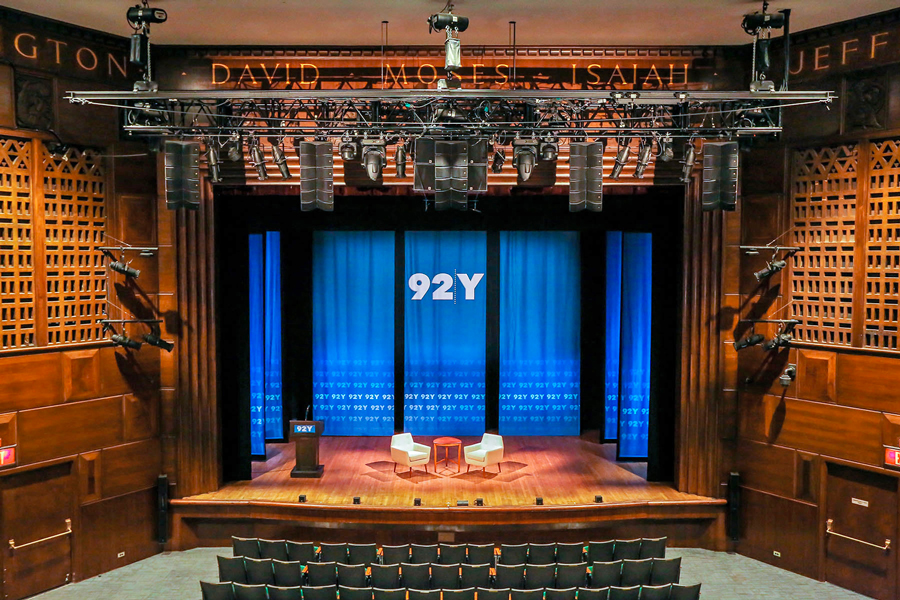
The Kaufmann Concert Hall at the 92nd Street Y is part of New York City cultural history. The 92Y itself was opened in 1874 and evolved into an institution, serving people with education, social services and entertainment. Central to its mission is the Kaufmann Concert Hall, which opened there in 1927 to host classical and other acoustic music genres, as well as world-renowned lectures and performances. Notably, Dylan Thomas did his last reading of Under Milk Wood there two weeks before his death in 1953.
Today, the 92Y has become an indispensable part of the New York City landscape. The honored stage of the Kaufmann Concert Hall hosts regular panel discussions with leaders in all sorts of fields: former heads of state, government leaders, supreme court justices, members of the news media, movie stars, and celebrity chefs—talks designed to enlighten and inform the citizens of NYC in a topical and interactive forum. Combined with a rotating program of musical theater, cinema experiences, rock and acoustic acts, and special events, the 92Y has grown into a cultural beacon on the Upper East Side.
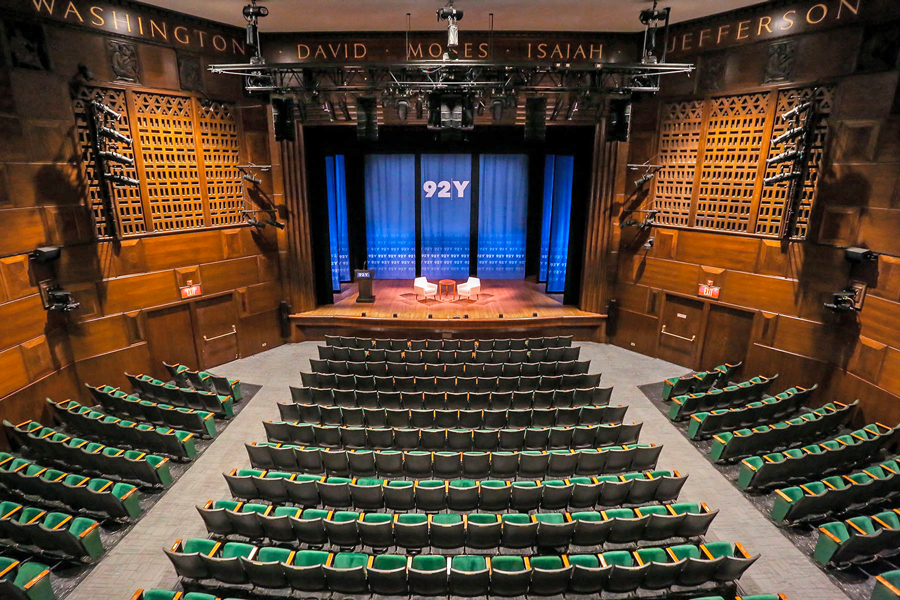
But this venerable space desperately needed an upgrade to its nearly 20-year-old audio system, which often worked against the naturally reverberant space and intimate programming of the hall.
“The main challenge for this concert hall is that the interior is largely made of wood, and it’s very reverberant,” explains Kaufmann Concert Hall Technical Director Sean Fogarty. “It was built in the 1920s and meant for classical music, so when we did amplified music, it could easily overwhelm the space.”
Enter L-Acoustics’ L-ISA Immersive Hyperreal technology, which was selected to solve these issues and bring the audio of the 905-seat Kaufmann Concert Hall into the 21st century. The technology has since reinvigorated the venue, bringing spacious, natural sound that is localized to the presenters onstage, while also blending into the notable architecture.
To match the historic venue, the L-ISA installation is in itself historic, marking the first US installation of L-ISA in a performing arts center. A true collaborative effort, the system was sold through local rental and integration mainstay See Factor, and installed by the Kaufmann Concert Hall’s IATSE Local One technical staff, with guidance from See Factor’s Alex Jones, L-Acoustics and Hudson Scenic Design.
As part of a broader update of the venue’s sound, which included the installation of a new digital FOH console and recording and broadcast infrastructure also supplied by See Factor, Fogarty and his team, including house sound engineer Anthony Lombard, reviewed all of the needs and challenges to design a system that would allow maximum flexibility and ease of use to handle the variety of events in the hall, while ensuring clear, intelligible, and exciting sound. The large network of systems had one overriding directive: integrating seamlessly and unobtrusively into the historic architecture of the venue.
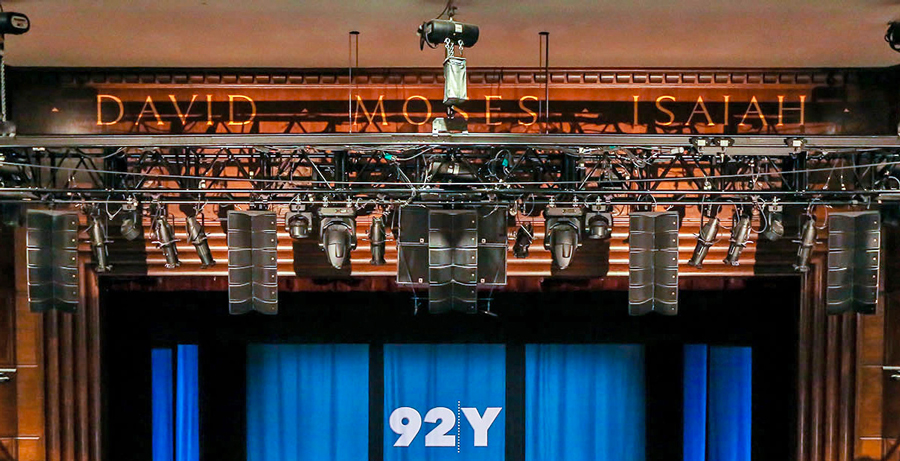
The answer was L-ISA. A demo of the system, at See Factor’s Queens, New York facility across the East River from 92Y, provided ample evidence of how L-ISA could address all of those contingencies. “We had gone to the venue for a site survey, and to speak with Sean and Anthony about what their needs were for a sound system,” says L-Acoustics Application Engineer Jesse Stevens.
“The more we discussed the acoustic properties of the space, the design directives, and the varied programming, it became clear that L-ISA was the key to solving this puzzle. So we all hopped a cab to the L-ISA studio space at See Factor so that the Kaufmann team could hear and mix in L-ISA in real time.”
Stevens designed a system comprising five arrays of Kiva II—with six enclosures per hang—across the width of the stage, and four SB15m subwoofers. This frontal system would solve a key issue in reinforcement: localization. The ability to localize the reinforced sound to the source onstage became a key factor to improve intelligibility, creating a cohesive blend of live and reinforced sound.
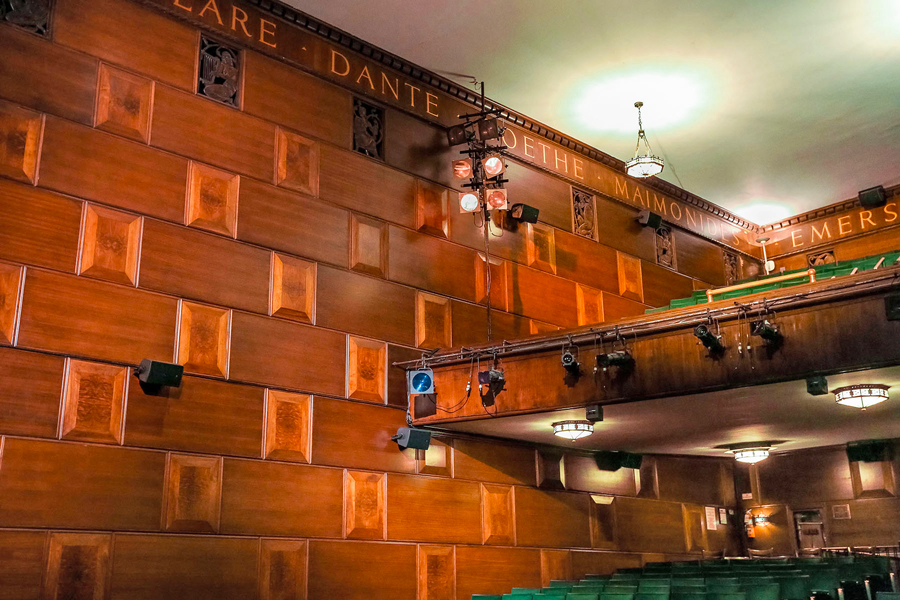
For the immersive aspect of the system, a total of 20 X8 loudspeakers—four X8 coaxial loudspeakers per side and four in the rear for balcony and orchestra—allow the Kaufmann staff to use the entire venue to place sounds for cinema, or enhance the space using the L-ISA integrated Room Engine.
Furthermore, 5XT under-balcony fills, six X4i ultra-compact coaxial frontfills on the lip of the stage, and two Syva colinear loudspeakers as proscenium nearfills complete the system, which is powered by 11 LA4X amplified controllers, fed via AVB from the FOH infrastructure. Finally, there are two L-ISA Processors (main and backup) located at FOH, and managed by the L-ISA Controller software, running on a Mac Mini.
Audio into the L-ISA system first starts at the console, a Yamaha Rivage PM10, which sends each audio channel post-fader and post-processing into the L-ISA Processors via a MADI stream. From there, the resulting objects are placed and layered in the L-ISA Controller—with the spatialized outputs sent to the corresponding loudspeakers.
FOH Engineer Anthony Lombard notes, “The ease of use of the L-ISA Controller is so natural. I can place objects quickly, move them around, add width and depth, and create and recall snapshots, all from the same screen in the software. It just naturally integrates into the workflow, so while mixing with dimension might seem complex, it’s made to feel really intuitive. And the quality of sound is just amazing.”
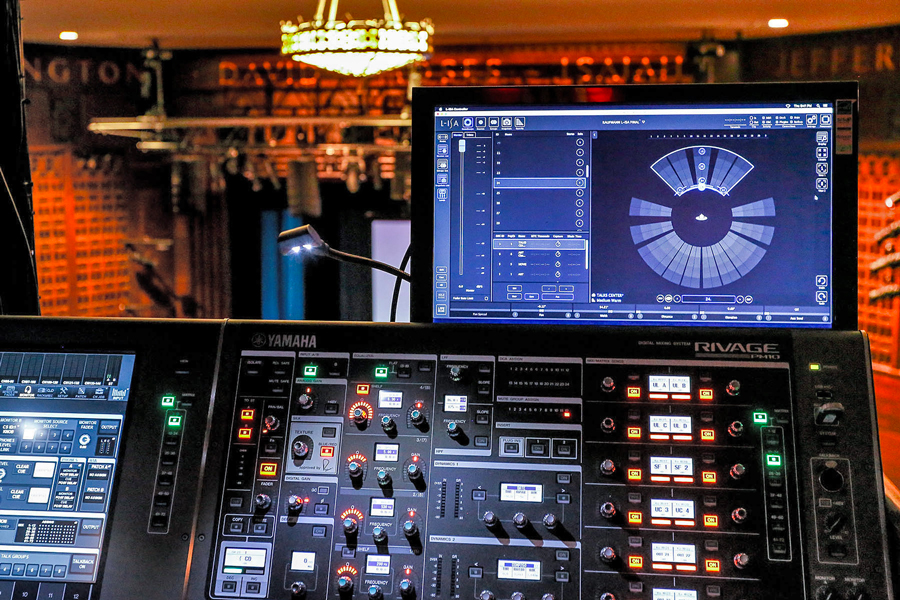
Based on the comprehensive system design, the Kaufmann Concert Hall’s IATSE Local One technical team was able to install the L-ISA configuration on its own, with assistance from Hudson Scenic Design, which designed a second “mini-truss” for the subs to minimize low-frequency vibrations, as well as a reconfiguration of the lighting system, letting both sound and lights share the existing box truss.
From the very first show, the L-ISA technology has performed flawlessly and proved its worth. In fact, that first show—a performance by Shinedown in September—well illustrated its capabilities as the band members discussed their music with the moderator, Chris Porter, followed by a three-song performance. “L-ISA has really changed the way we hear music here,” adds Fogarty.
For information on 92nd Street Y’s Kaufmann Concert Hall and upcoming events, visit 92Y website.
See Factor and Hudson Scenic Design can be found on See Factor website and on Hudson Scenic website, respectively.
L-ISA can be found at L-Isa Immersive







